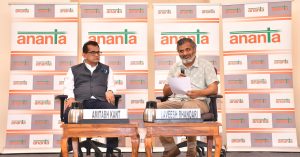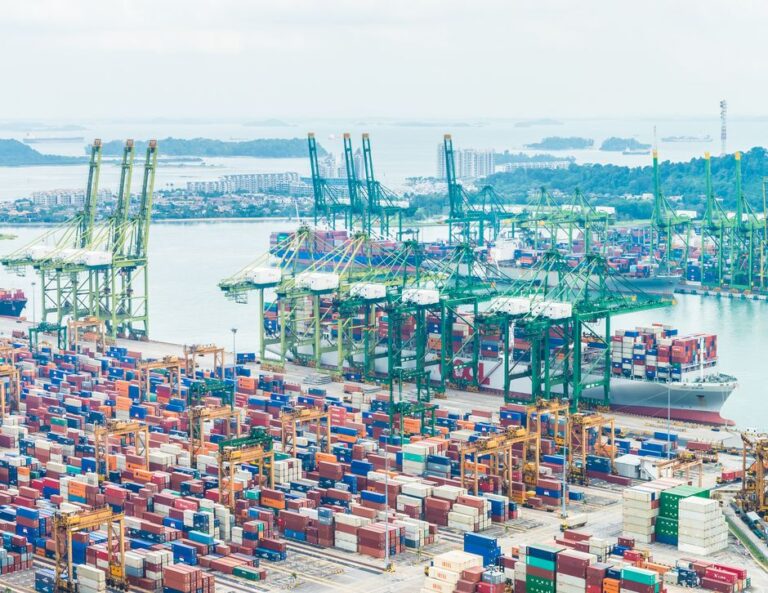The contents of this essay are based on conversations during the 7th India-US Forum
In the backdrop of the cost differential offered by various countries vis-à-vis China and the tariff policies imposed by the United States, dream trade and trusted geographies have become a trending subject. Security, resilience, reliability, and accessibility have become critical factors in preparing supply chains for a “just-in-case” scenario. The focus is on trade alliances with mutually acceptable norms, transitioning from mere value addition to value system formation.
The US government has stated its intent to reshore, nearshore and friendshore. Simultaneously, the conversation around the China Plus One diversification strategy has shifted from identifying India as an alternative location to a viable first choice. It stands out as a strategic market due to innovation, talent, comparative cost advantage, and superior quality of products.
In this context, a Free Trade Agreement (FTA) between India and the United States is a long-standing subject of discussion. Some experts suggest that there is little correlation between FTAs and actual growth in trade. The exponential trade growth between the US and Vietnam is an example. Similarly, the US does not have FTAs with the United Kingdom, the European Union, or Japan, and that is not a hindrance to trade. In comparison, its FTA with Australia has led to issues with legislative provisions around friendshoring. The lack of a clear definition of ‘friends’, where an FTA ends up being equated with friendship, further complicates the issue.
Two contextual factors merit attention. First, trade between China and the US is highly cluttered. Second, the extent of possible trade under the standard WTO rules should not be underestimated. Therefore, the India-US trade relationship has powerful opportunities to grow even without a trade agreement. There are no real, short-term prospects for a deeper trade relationship if it is to be defined by a formal agreement. Furthermore, any agreement that is to be politically viable will be cluttered.
A counter argument suggests that trade agreements ease movement, allow nations to strengthen their strategic relationships, build information symmetry, and increase investor confidence. Vietnam’s FTAs with 16 major economies have reduced barriers for low-margin commodities as well as countered Chinese manufacturing.
Reshaping bilateral trade
The India-US bilateral trade growth is driven by large domestic demand, the need to build supply resilience, and India’s e-commerce potential. Both governments have established sufficient trust frameworks for industry to operate, which has enabled the ongoing move to manufacturing, an enhanced natural progression from thirty years of collaboration in design engineering. It is a welcome move as both countries are dependent on China for electronics and generic pharmaceutical supply chains, and the US market is exceptionally open to Indian products in these sectors.
There is opportunity to do more through the removal of value and commodity restrictions, better airport infrastructure for cargo, setup dedicated express terminals, and facilitation of trans-shipments. Building supply chain visibility through data and technology is also pertinent. This includes real-time tracking of shipments, development of high-level monitoring and intervention tools, and optimization of network systems to account for external factors like extreme weather and geopolitical disruptions. India’s large ecosystem of startups and academic institutions like the IITs can lead research and development in this area. Academic institutions in the US can also support this bid.
Creative thinking is needed in the bilateral trade relationship. Establishing trade zones, rather than completely revamping the system, could be beneficial. This approach would mean getting rid of regulations in these zones to promote collaboration and focusing on areas like semiconductors and artificial intelligence.
While global multinationals have played their part in the growth of the India-US relationship, in India the proportion of active startups is fairly thin in critical technologies like cyber security, quantum, and semiconductors. Steps must be taken to improve this.
Domestic policy reforms and future growth
India’s ambitions have to extend beyond being a ‘plus one’. It has to strive to be a critical piece in the global value chains (GVCs). While it has been demonstrated that scale in manufacturing is possible, this potential has to be harnessed in developing competent ecosystems, capital goods capabilities, and integrated design solutions. The focus has to be on two to three core sectors, greater inclusion of all states, and promotion of low-cost digital solutions. Reforms in identified growth sectors within India’s GVCs have to be prioritized.
Indian financial systems have to be integrated with its ambitions as well as global financial markets. India will also be required to generate capital account convertibility, enable greater movement of people, and facilitate ownership of assets. Investments have to be decluttered at a global level.
At the national level, it is imperative for India to maintain a prudent fiscal policy and strive for credit rating upgrades. Tax policy reforms, encompassing both indirect and direct taxes, need to remain a focal point. Given the passage of seven to eight years since the implementation of GST 1.0, it is crucial to evaluate the landscape for GST 2.0 and direct tax reform. These are key areas that require the attention of the Union government.
The Gati Shakti master plan, national logistics policy, push for multi-modal infrastructure, and a multi-jurisdictional framework to ease clearances are steps in the right direction. Ambition levels in India should be higher. The onus of ease of doing business is on the subnational governments. States like Tamil Nadu, Gujarat, and Uttar Pradesh should move beyond interstate comparisons to compare themselves with countries like Vietnam.
Indian cities can be drivers of economic growth. Mumbai, for instance, is in line to become a global financial center. The plans include increasing the GDP of the Mumbai region to $1.5 trillion. Several interventions are required to unlock the potential of India’s cities, including increased land availability and the ability to harness financial resources effectively. The strengths, weaknesses, endowments, political aspirations, and industrial and business drivers have to be analyzed to implement effective policy measures. Most importantly, intent has to be backed by actual commitments.
There is potential for India to focus on Application Programming Interfaces (APIs), medical devices, and chemicals. It can be a pioneer in developing an agri-stack, urban-stack, and several other initiatives in this domain.
As India moves past the challenges of access to basic necessities, the coming decades will bring new set of challenges, including avoiding the middle-income trap. There are challenges of lack of policy predictability, logistics, large-scale manufacturing infrastructure, and ambiguous direct and indirect tax policies present challenges. In order to maintain competitiveness, specific barriers, potentially down to eight-digit Indian Trade Classification Harmonized System (ITC-HS) codes, have to be identified and presented to the government for tariff adjustments.
To efficiently participate in global value chains, India’s skilling sector also has to be decluttered. There is a need for aggressive action to bridge the gap between current conditions and desired reforms. In particular, this includes land and labor reform as well as sustainable transition to ensure long-term energy security. While carrying out these reforms, political sensitivities also have to be acknowledged.
India is bestowed with an abundance of mind and muscle, as well as the ability to make, mine, and manufacture. The future of India will be built on the active participation of Indian companies in global supply chains. Another trend that will contribute to de-risking is the gradual decline in China’s population. With two successive years of population decline in 2022 and 2023, projections indicate that China’s population could halve to 700-800 million within 70 years. This demographic shift will likely lead to labor shortages and increased labor costs in China. Consequently, both multinational and Chinese companies may need to relocate out of China to address these challenges. This scenario will be advantageous for India, given its young demography and unique strengths.
Balancing Security and Investment
On a global level, de-risking is proceeding relatively slowly. The inherent challenge to de-risking is the incomplete mitigation of risks unless trading between different blocs ceases to exist. Currently, such a transition cannot take place. Trade deficits are primarily found in big democracies like the US, UK, and India. Trade surpluses, especially with the crises in Europe following the Russian invasion of Ukraine, are mainly found in big autocracies such as China, Russia, and Saudi Arabia. As trading occurs between them, self-sufficient blocs are a distant idea.
De-risking efforts have to be focused on individual sectors and progress has been made in identifying the necessary policies. How this reorientation is fashioned will be critical. A balance has to be struck between security and investment considerations. Another factor that has to be considered is the case of re-risking rather than de-risking. This is particularly significant in the push for renewable energy, as the minerals required for transition are primarily processed in a single country, and efforts to reduce dependence on that country paradoxically increase risk in the renewable energy sector.
In India, engineering and R&D infrastructure have transitioned from back office to value-adding IP generation over the past three decades. However, manufacturing still requires a long lead time due to the scale and complexity of the inputs required. For instance, in the semiconductor sector, for a large company to shift operations, at least three to four other vendors also have to see economic viability in the move. India’s progress is in its early stages, with positive signs in policy, talent, capital, and strategy.
The investments needed to ensure multiplicity of supply are yet to begin. The current moves should be characterized not as de-risking, but as avoiding new sources of risk. Current US policies are an effort to avoid creating dependencies on China.

























